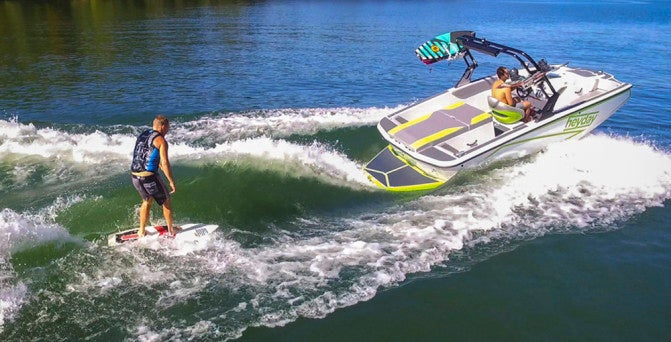
A towboat for under $40,000 - but it comes at a price
If you like to wakeboard or wake surf, you probably covet a purpose-built, inboard-powered tow boat. These sleek machines, with their glistening metal-flake gelcoat finishes, are truly works of art, carefully designed to deliver ideal water conditions for wake surfing or wakeboarding, while still offering plenty of comfort and amenities to keep your friends happy as they cheer you on from the boat. The problem with purpose-built, inboard-powered watersports boats is that all this capability and luxury doesn’t come cheap. They cost a lot of money, with most carrying six-digit price tags.
Enter the Heyday WT-1 – a unique, purpose-built, inboard-powered watersports boat that’s specifically designed to appeal to millennials who want to enjoy watersports, who will tow the boat with a smaller vehicle, and who need it to fit in a garage. Further, it’s engineered to sell for under $40,000. In order to meet those aggressive design criteria, the Heyday WT-1 follows a philosophy of eliminating everything that isn’t deemed absolutely essential.
Stretching 17 feet, 11 inches in length and with an eight-foot beam, the WT-1 utilizes an unusual center console layout with the helm positioned far forward, directly along the center line on top of what would otherwise be the bow deck. The driver sits straight behind it on a single seat, and directly in front of the inboard engine. This seating arrangement, along with the boat’s high, straight gunnels and clipped bow and stern give it an overall look that’s a bit like a personal watercraft parked in a bathtub.
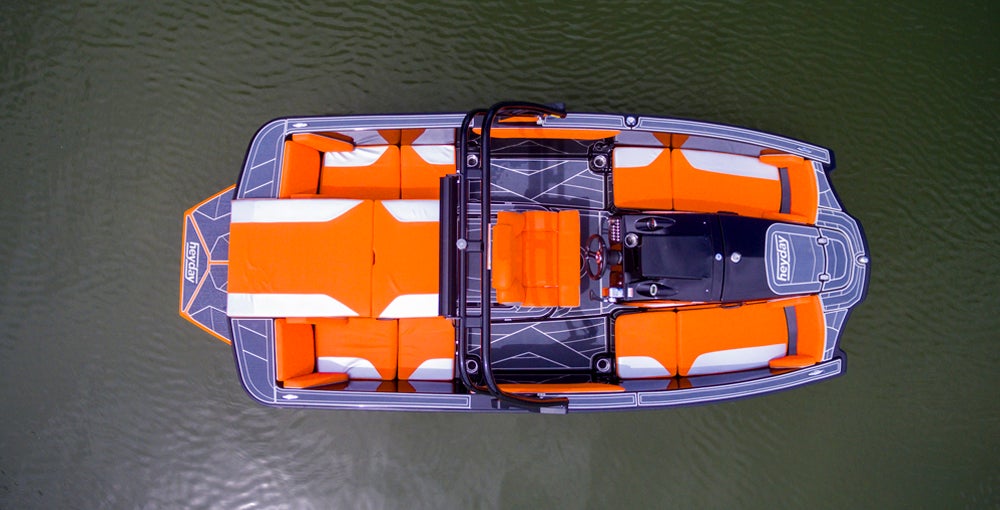
Viewed from above the Heyday WT-1 reveals its unusual seating arrangement, with the driver in the center and passengers confined to long rectangular seats in the corners.
The idea behind this forward helm position is to give the driver a better view when the bow is pushed up during watersports, while simultaneously keeping their weight on center and toward the front of the hull for better balance. The fuel tank is also positioned far forward – under the helm, in fact – for the same reason. Remember, this is a 17-foot, 11-inch boat with an inboard engine and 1,200 pounds of ballast. You need some weight up front to keep it from standing on its tail.
Flanking the helm console on the front deck are a pair of rectangular seats that run parallel to the console, complete with flat seat cushions, rear-facing seat backs and grab handles. In keeping with the boat’s design philosophy of eliminating anything that isn’t necessary, the removable seat cushions in these spaces are fairly thin while combing is restricted to just the back rests, leaving the hull sides as bare fiberglass. These seats probably aren’t something you want to sit in for any length of time, but they are likely to be the best place from which to watch the action out back, being a bit less congested than the seats in the stern.
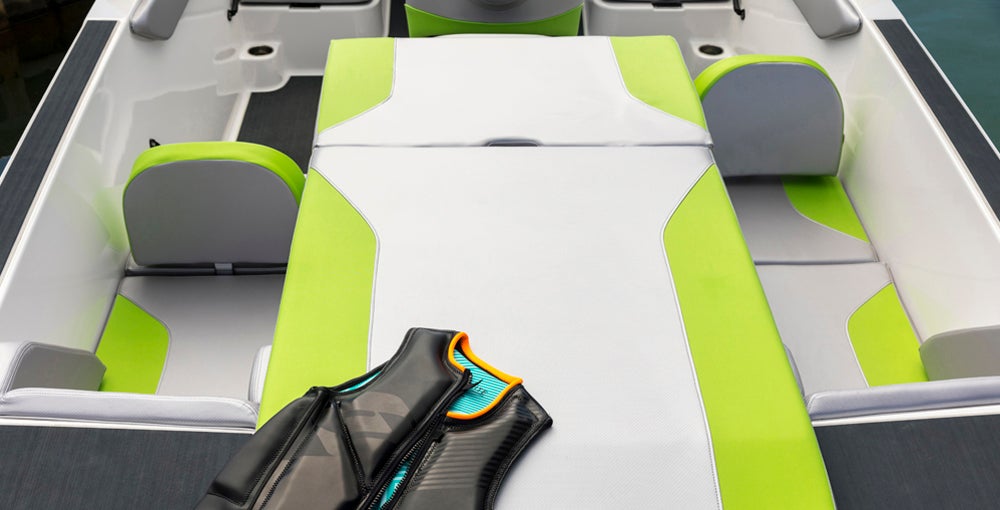
The tall engine cover has a cushion on top to form a sun pad. The lack of legroom for rear seat passengers is obvious, particularly if you need to squeeze two people into each of these seats.
The inboard engine of the WT-1 is concealed under a tall, doghouse-style engine cover that’s mounted on the centerline between the driver and the transom, and topped with a large flat cushion to form a sun pad. The slot-like rear seats are similarly positioned on either side of this structure, with forward-facing seat backs mounted against the transom. It is also possible to face aft by inserting a removable back cushion into the forward end of the seat base. It’s a bit of an awkward arrangement though, since getting out of the seat then requires you to either remove the seat back or climb over it.
With its design emphasis on creating a big wake and maintaining a low selling price, seating is clearly a weak spot in the WT-1. Although rated for nine passengers, in reality this boat will seat five adults – the driver on their single helm seat, with one passenger in each of the four corners. The only way to fit nine people would be to have two in each corner, sitting in tandem as if riding a motorcycle, with one person wrapping their arms and legs around the other. While it’s a fun thought, in the real world it simply isn’t practical.
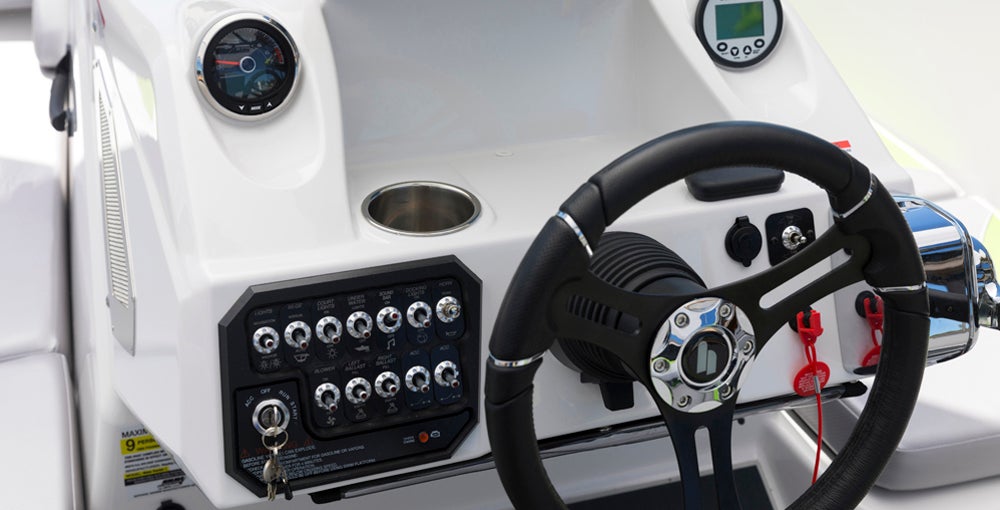
The limited instrumentation of the Heyday WT-1 assumes the driver will provide their own tablet and connect to the boat via Bluetooth to view the data.
Heyday’s concept of eliminating everything that isn’t absolutely necessary also extends to the helm console itself, where owners are expected to supply their own Android tablet to serve as a dashboard. The only instrument installed on the boat is a tach with a rotating fuel gauge an speedometer – everything else streams via Bluetooth to the Heyday app on a user-supplied tablet. The tablet also functions as the boat’s sound system, streaming its music to the sound bar in the overhead wake tower.
Yet another feature to be eliminated in the WT-1 are the ballast tanks. In this boat, the 1,200 pounds of ballast water pump straight into the bilge. Heyday also eliminated the traditional gel coat graphics – the WT-1 gets a vinyl wrap instead. While Heyday positions this as a benefit (“Easily change the color of your boat!”), the durability of what amounts to a vinyl sticker remains to be seen. Beyond that, the added cost of repeatedly replacing scratched and worn vinyl wraps would seem to be at odds with the WT-1’s goal of being inexpensive to own.
Although the Heyday WT-1 gives up a lot in terms of comfort and amenities, it doesn’t scrimp on what it was designed to do, and that is provide a nice wake while still hitting a $40,000 price tag. Standard power is a 350 horsepower PCM Challenger engine, which works well with the boat to create a surprisingly nice wake for a boat that’s less than 18 feet long.
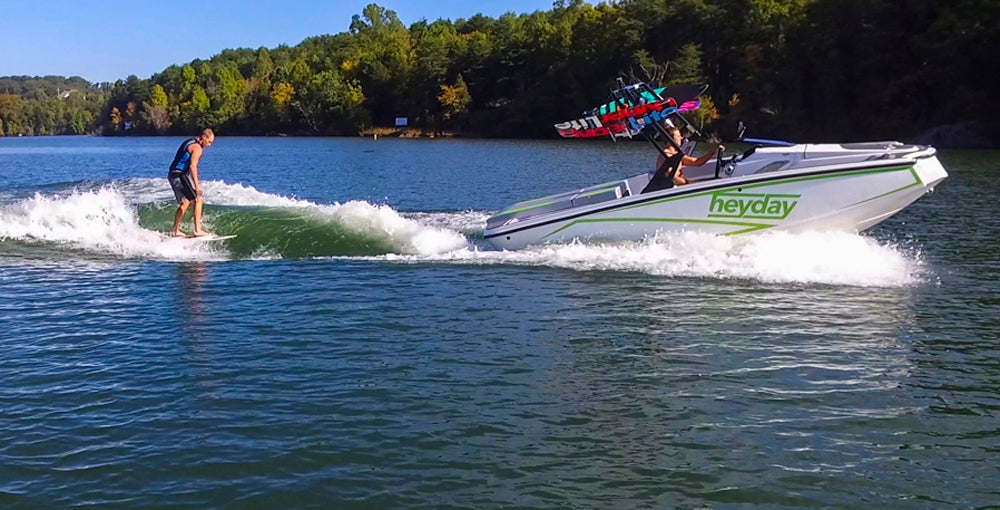
While it compromises in seating and overall creature comforts, the Heyday WT-1 does produce a nice wake for watersports.
Is that enough? Heyday is betting that it is. If buyers are willing to overlook the lack of creature comforts, the WT-1 does deliver a decent wake, it tows behind mid-sized SUVs and it fits in a standard garage. But prospective buyers should also check out competing bowriders that have watersports capabilities through use of Volvo Penta’s innovative Forward Drive system – many provide surprisingly good wakes along with far more comfortable seating and greater overall utility, and for a similar monthly payment.
Heyday WT-1
Length: 17’ 11”
Beam: 8’ 0”
Dry weight: 3,150 lbs
Ballast: 1,200 lbs
Fuel capacity: 35 gal.
Passenger capacity: 9
Maximum power: 350 hp
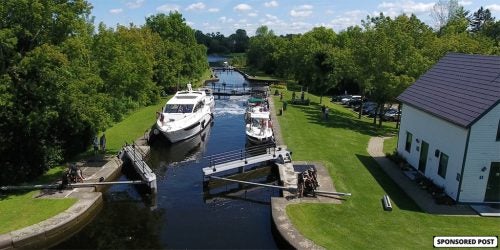
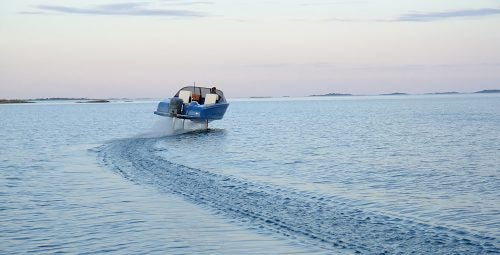
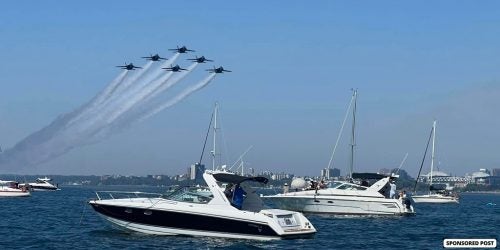


 Fort Lauderdale International Boat Show Preview
Fort Lauderdale International Boat Show Preview 10 Best New Boat Accessories at IBEX 2021
10 Best New Boat Accessories at IBEX 2021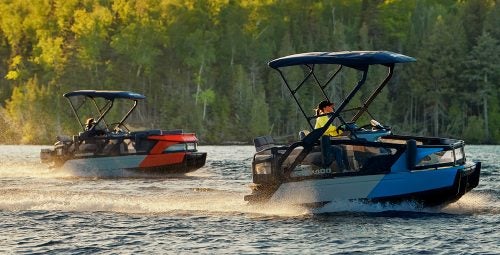 2022 Sea-Doo Switch Pontoon Boat Lineup Unveiled
2022 Sea-Doo Switch Pontoon Boat Lineup Unveiled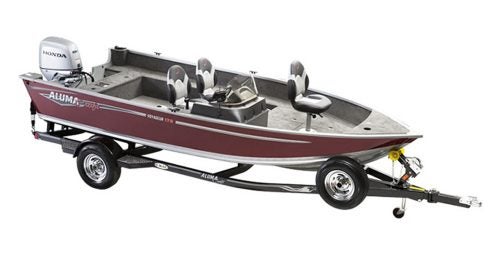 BRP Enters Fishing Boat Market with Purchase of Alumacraft Boat
BRP Enters Fishing Boat Market with Purchase of Alumacraft Boat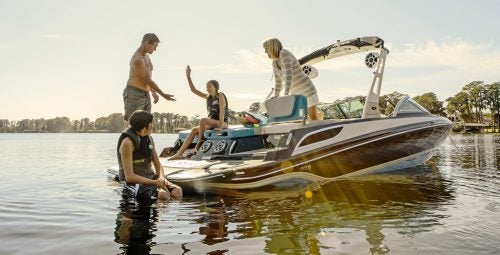 Volvo Commits To Electric Power By 2021
Volvo Commits To Electric Power By 2021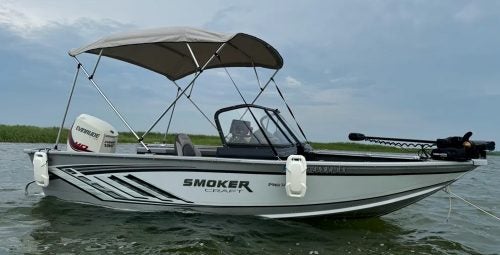 Kemimoto 4 Bow Bimini Top and Boat Bumper Review
Kemimoto 4 Bow Bimini Top and Boat Bumper Review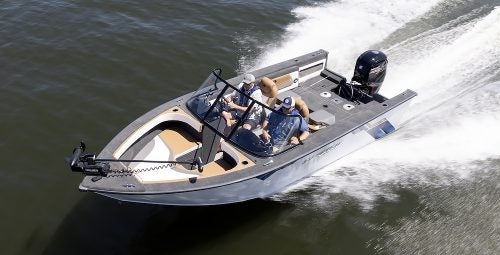 Starweld Victory 20 Review
Starweld Victory 20 Review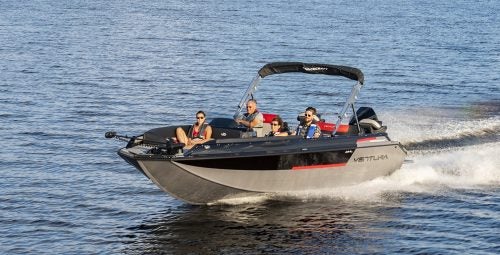 Princecraft Ventura 23 RL Review
Princecraft Ventura 23 RL Review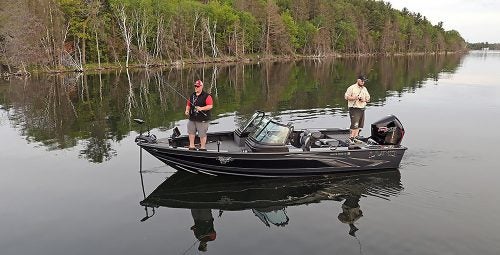 Lund 2075 Pro V Review
Lund 2075 Pro V Review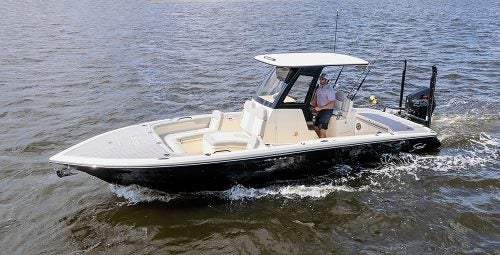 Scout 281 XSS Review
Scout 281 XSS Review Fuel Saving Tips For Boaters
Fuel Saving Tips For Boaters Best Boating Accessories
Best Boating Accessories Best Boating Apps
Best Boating Apps 5 Pontoon Boats That Are Made To Fish
5 Pontoon Boats That Are Made To Fish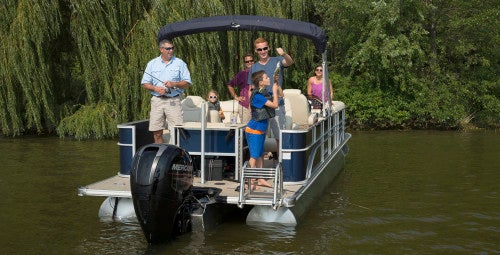 10 Great Small Pontoons
10 Great Small Pontoons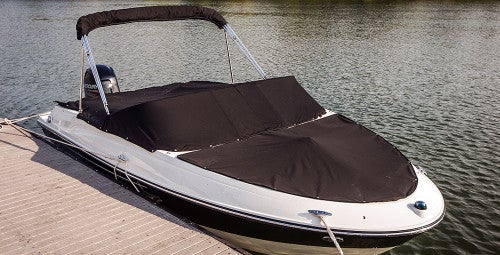 Your Boat Was Expensive—Do You Really Trust a $2 Rope From the Dollar Store to Secure It?
Your Boat Was Expensive—Do You Really Trust a $2 Rope From the Dollar Store to Secure It?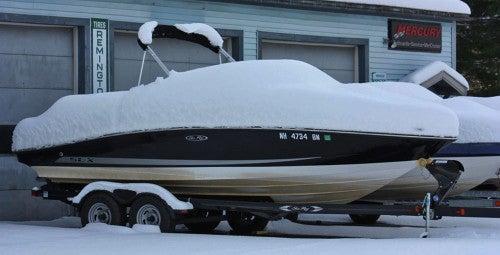 Do I Need Insurance Coverage Against Ice or Freezing Damage?
Do I Need Insurance Coverage Against Ice or Freezing Damage?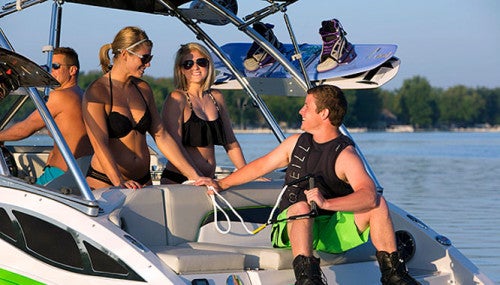 What Kind Of Insurance Coverage Do I Need?
What Kind Of Insurance Coverage Do I Need?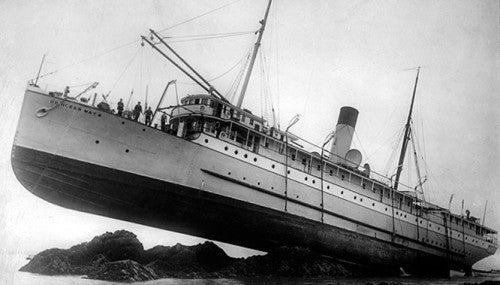 What About Salvage?
What About Salvage?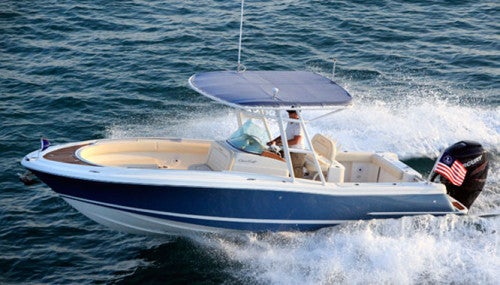 Boat Insurance or Yacht Insurance?
Boat Insurance or Yacht Insurance? The Best Bowriders For The Money
The Best Bowriders For The Money
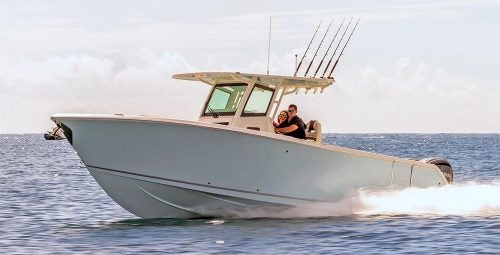 Sailfish 312CC Review
Sailfish 312CC Review
 The Wildest Concept Yachts
The Wildest Concept Yachts
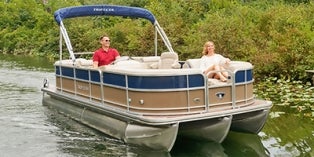 2016 Trifecta 200 Series 220FCR
2016 Trifecta 200 Series 220FCR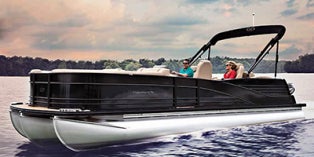 2016 Harris Grand Mariner SL 270 DL
2016 Harris Grand Mariner SL 270 DL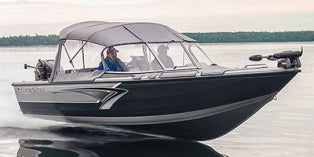 2016 Crestliner Authority 2050
2016 Crestliner Authority 2050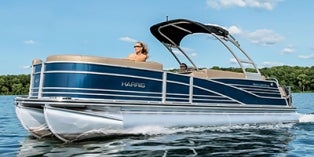 2016 Harris Grand Mariner SL 230 DLDH
2016 Harris Grand Mariner SL 230 DLDH
